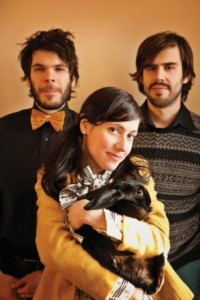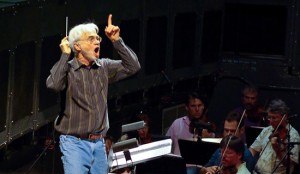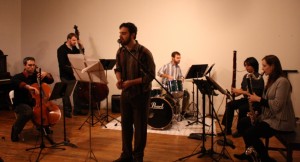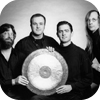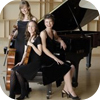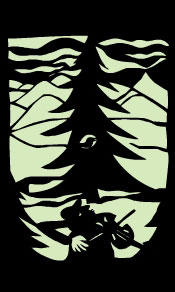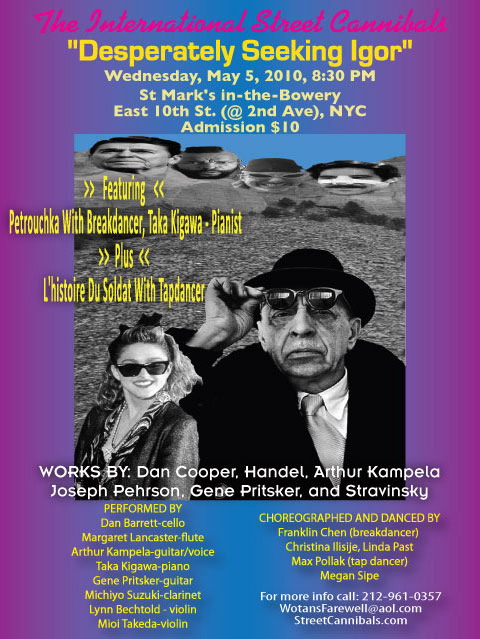A few of the of the unusual and interesting events coming up soon, soon soon:
Victoria, B.C. : Wednesday May 12th, 8pm at Knox Presbyterian Church (2964 Richmond Road, Victoria / $10), LaSaM (Luminosity and Sounds by adventurous Musicians) is presenting a program titled “And Beethoven Heard Nothing“. As they tell it, the show will be “exploring Beethoven’s inherent belief systems, his deafness and the sonorities of his later work. Sonic phenomena; tinnitus and deafness; acoustic space, climax and stasis; memory and silence… The ensemble has pulled experiences of Beethoven’s thought and music through the filters of contemporary soundscape and performance practice into an evocative environment of dancing shadows, image and light.” Directed by musicologist Dylan Robinson and composer Tina Pearson, with technical direction by George Tzanetakis and live video projections by Tim Gosley. Besides Pearson (flute, voice, glass) and Tzanetakis (clarinet, saxophone) collaborating musicians include Chris Reiche (piano), Cathy Lewis (voice, percussion), and Alex Olson (bass). Island Deaf and Hard of Hearing Society will be on hand with information; the performance will be followed by a discussion about the project, and about how we use our ears in contemporary urban life.
. . . . .
Baltimore, MD : Friday May 14th is the kick off for the 2010 edition of the Megapolis Audio Festival, running all the way through Sunday the 16th. Right from the horse’s mouth, there’ll be “circuit bending /noisemaker constructions, sonic slumber parties, free-form audio editing sessions, kickass musics, interactive demonstrations, urban sonic explorations, experimental musical practice and theory, film with funfun sounds, musical performances, subversive audio tours, (un-boring) lectures, and moremoremoremore.”
The
line up is mind-boggling in its scope, filled not only with listening but workshops, installations, player participation and likely wild parties hither and yon. A special shout-out to my composer friend
Erik Spangler, who in his alter-ego known as
DJ Dubble8 will be working with Baltimore’s intrepid
Mobtown Modern ensemble.
. . . . .
Toronto, ON : Saturday, May 15th is the day to catch Contact Contemporary Music: Six Team League at the Music Gallery (197 John St., Toronto / 416-204-1080 / $20).
In celebration of Canada hosting the 2010 Winter Olympics with a nod to the National Hockey League’s “Original Six,” Contact Contemporary Music is pitching in with an ambitious attempt to connect the country through music. Six ensembles across the country will simultaneously present and perform a concert of six new works by six composers from six regions of the country in a musical sweep from sea to sea to sea.
The participating ensembles are the Motion Ensemble (Fredericton, NB) who have commissioned composer Joel Miller; Bradyworks (Montreal, QC) who have commissioned composer Michel Frigon; St. Crispin’s Chamber Ensemble (Edmonton, AB) who have commissioned Dave Wall; Redshift Music (Vancouver, BC) who have commissioned Jordan Nobles; and Contact Contemporary Music who have commissioned Juliet Palmer..
Six composers. Six ensembles. Six cities. Six concerts. Six Team League.
. . . .
Saint-Gilles, Belgium : Also on Saturday, May 15th, 8pm but half a world away (Maison du Peuple de Saint-Gilles, Parvis de Saint-Gilles, 37-39), the brilliant pianist Stephane Ginsburgh will be joining many other wonderful musicians, in a free concert titled “Constellations-Figure“. A clumsy translation:
What is a constellation? A design, a network. Links forged between the points seen from afar, but apparently close. They are a familiar and enigmatic. A graph that tells us about relationships, geometric and experienced. Paths traced between places and individuals symbolic or real. What form a constellation? The proximity of the points or the path of truth? Twenty artists are encouraged to draw their constellation, while participating in the figure which will rise by the force of things. Do you like the Milky Way?
Did I mention many other wonderful musicians? It’s a “Night of Soloists”: Jean-Michel Agius (voice), Primitiv (beatbox), Laurence Cornez (piano), Tom De Cock (percussion), Fabian Fiorini (piano), Stephane Ginsburgh (piano), Philippe Liénaert (piano), Céline Lory (piano), Barbara Mavro Thalassitis (voice/dance), Laurence Mekhitarian (piano), Gerrit Nulens (percussion), Isabelle Roeland (voice), Jessica Ryckewaert (percussion), Jan Rzewski (saxophone), Johanne Saunier (voice/dance), Laurence Vielle (voice), Gilles Wiernik (voice). It’s a cryptic but promising event, in a beautiful and historic location.

